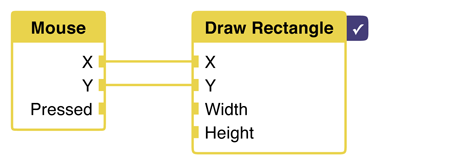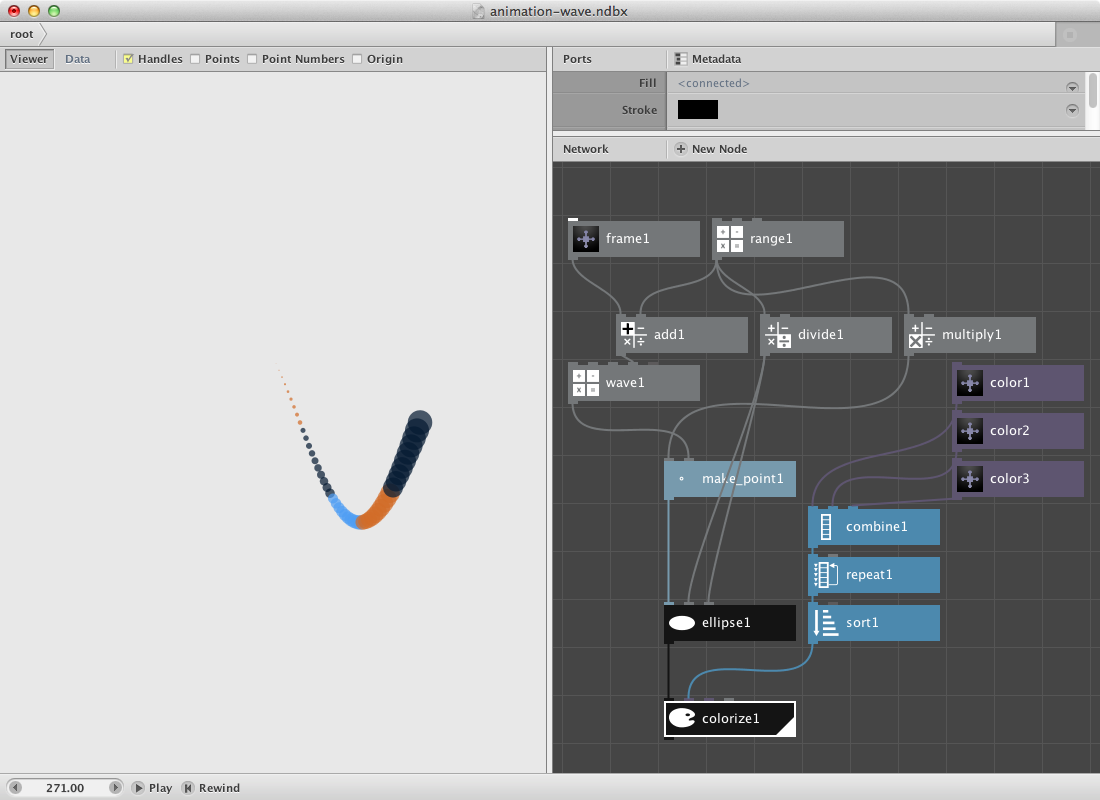

Each one is different - and some are fabulously complex. I spent a few minutes looking at shoe print clip art and the soles of actual shoes, boots, and sneakers (two examples attached). If this technique doesn't work for you, send me an example of what you are trying to achieve and I could take another whack at it. If you want something fancier, maybe an Escher-like hyperbolic effect, you may need to do some trigonometry, but with determination almost anything is possible in NodeBox. This is a simple but somewhat crude technique since it only produces two sizes. I also wiggle and randomly rotate them for a less rigid (more organic?) look. If you look closely at the screenshot you can see that the stars around the edge of the footprint are smaller than the stars in the interior. When drawing the pattern I replace the dots with stars.

I can use this fact to distinguish those boundary dots and make them smaller (instead of just clipping them). Dots on the boundary which get partially clipped will have some other pointCount. A normal dot (ellipse) has a pointCount of 13. I fill a grid with dots and use a compound node to clip them to the shape of a footprint. Making each element of the pattern change size as it approaches the boundary is trickier, but there are ways to do this. You are already using the compound node to clip a repeating pattern inside the boundary of a shape. Could you post an example of the effect you are trying to create? The built in constructor also gives you an instance of the Nodebox Renderer at 'm not entirely clear on what you mean by "organic". This gives you a built in constructor that take the express req and res objects, as well as a loglevel. The first thing to note is that your handler must extend the NodeboxHandler class. There are a couple of different ways to assign views, layouts, and variables but the easiest is to initialize the Nodebox router with a config object that contains everything it needs.īelow is an example handler: const NodeboxHandler = require('nodebox-framework').NodeboxHandler
Nodebox no repeat how to#
A handler doesn't necessarily need a layout, but it does need a view to know HOW to render. As you can probably guess, these are located in the views and layouts folders respectively. Views and layouts are composed using the template functionality of lodash. A url like /home/foo/bar would be supported by a directory structure like: / Nodebox also supports more complex urls by nesting the directory structure. The handlers are stored in the /handlers folder of your project.įor the above example, the directory structure would look like: / Nodebox translates that call to load a handler named home (that returns a class), and call the about method. For example, if you went to the url: /home/about

Nodebox translates your urls into system calls. Then add it as middleware: const express = require('express') Ĭonst Nodebox = require('nodebox-framework').Nodebox Ĭonst nodeBox = new Nodebox() Ĭonsole.log('Dev app listening on port 3000!')
Nodebox no repeat install#
Pull Nodebox into your project: npm install nodebox-framework Nodebox handles all of your routing, and follows simple rules to translate urls into object and function calls so you can worry about creating your project instead of how to wire everything up. Nodebox is a lightweight framework for Node that acts as an Express middleware to quickly set up routes based on file system paths. Lightweight Node/Express framework based on Coldbox What is Nodebox?


 0 kommentar(er)
0 kommentar(er)
